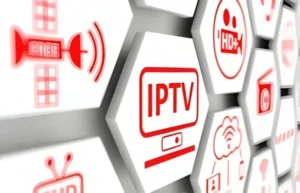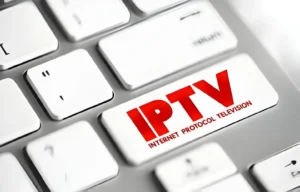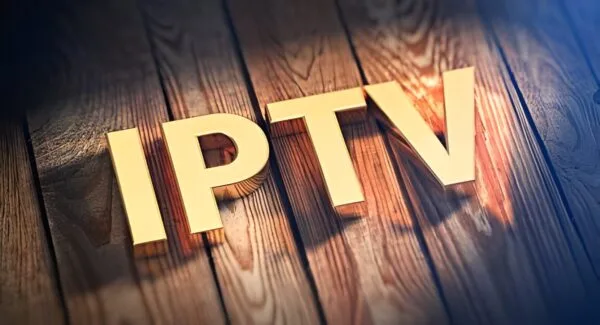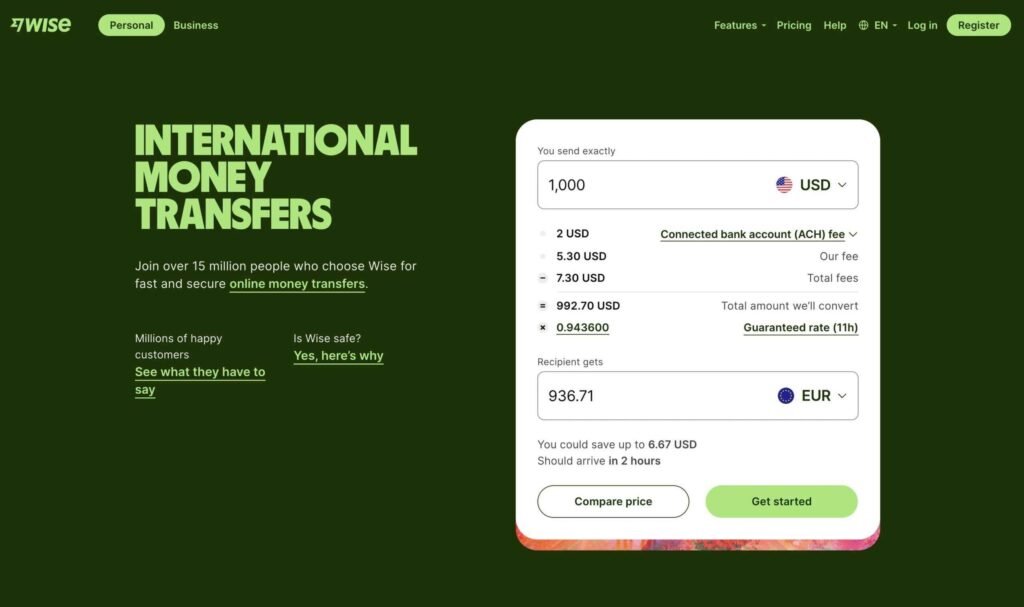In the rapidly evolving world of digital entertainment, IPTV has emerged as a game-changer. What is IPTV? It stands for Internet Protocol Television, a technology that delivers television content over the internet rather than through traditional cable or satellite methods. This innovative streaming service has caught the attention of viewers worldwide, offering a flexible and customizable way to enjoy TV programming.
IPTV providers are transforming how people consume media, giving users access to a vast array of content at their fingertips. With an IPTV subscription, viewers can watch their favorite shows, movies, and live events on various devices, from smart TVs to smartphones. This guide will explore the meaning of IPTV, how it works, and the benefits it brings to the modern entertainment landscape. We’ll also look at the different types of IPTV services available and what to consider when choosing a provider.
What is IPTV?
Definition of IPTV
IPTV, which stands for Internet Protocol Television, is a cutting-edge system that delivers television content and multimedia services over Internet Protocol networks. This innovative technology transforms shows, music, and live TV programs into a compressed digital format, transmitting them through home internet connections. Unlike traditional cable or satellite broadcasting, IPTV operates through a two-way communication system, enabling users to stream their favorite shows and movies and interact with the content in real-time.

How IPTV differs from traditional TV
The key difference between IPTV and traditional TV lies in the delivery method. While conventional television relies on broadcast TV, cable TV, or satellite signals, IPTV uses the Transmission Control Protocol/Internet Protocol (TCP/IP) suite. This fundamental difference leads to several unique features:
-
- Content Delivery: In traditional television, all programming is broadcast simultaneously in a multicast format. Viewers select programs by changing the TV channel. IPTV, on the other hand, sends only one program at a time in a unicast format.
-
- User Control: IPTV empowers users with greater control over their viewing experience. Subscribers can select and play programs on their TV or other connected devices within their home internet network 2.
-
- Flexibility: IPTV offers the flexibility to enjoy favorite shows and movies on any internet-connected device, including smartphones, tablets, laptops, or smart TVs.
-
- Quality: IPTV often provides superior picture and sound quality, unaffected by external factors. Many IPTV services offer HD and 4K streaming, promising an exceptional viewing experience.
-
- Customization: IPTV services offer customization options, allowing users to tailor their channel lineup and access multiple local and international channels with affordable plans.
Types of IPTV services
IPTV encompasses several types of services, each catering to different viewing preferences:
-
- Video on Demand (VOD): This service empowers users to handpick their desired content from an extensive library and stream it whenever they please. It offers unparalleled freedom in entertainment, allowing viewers to catch up on missed episodes, watch movies, or explore documentaries at their convenience.
-
- Time-Shifted IPTV: This type allows users to control their viewing schedules. With time-shifted IPTV, viewers can pause, rewind, or fast-forward through live broadcasts. It includes services like catch-up TV and start-over TV, enabling users to watch previously broadcasted content or restart a live program from the beginning.
IPTV has revolutionized the way people consume television content, offering a more flexible, customizable, and interactive viewing experience compared to traditional TV services. As technology continues to advance, IPTV is likely to play an increasingly significant role in the future of television entertainment.

How IPTV Works
IPTV Infrastructure
IPTV systems rely on a robust IP network infrastructure to deliver television content over the internet protocol suite 4. This infrastructure consists of various components working together to ensure smooth content delivery. At the core of IPTV is the IP core network, which serves as the backbone for transmitting video and other data to users’ devices 5.
To guarantee efficient transmission, the IP core network must be designed with sufficient capacity and low latency 5. This means the network should have enough bandwidth and processing power to handle the expected volume of traffic while minimizing data travel time 5. Network architects and engineers employ various techniques to reduce latency, such as reducing network hops, implementing Quality of Service (QoS) mechanisms, using edge caching, and utilizing multicast streaming 5.
The IPTV headend equipment plays a crucial role in the infrastructure. It receives, processes, and distributes TV signals over the IP network to end-users 6. This system includes multiple components:
-
- Encoders: Convert analog video signals into digital format and compress them using standards like MPEG-2, H.264/AVC, and HEVC 6.
-
- Server rack: Consists of various servers such as Origin Server, Transcoding Server, VOD Server, Middleware Server, and CDN Server 6.
-
- Management systems: Monitor the IPTV headend system’s health and performance parameters 6.
-
- Billing systems: Track customers’ subscription status and payment information 6.
-
- Middleware: Provides an intuitive interface for subscribers to access IPTV services 6.
Content Delivery Process
The content delivery process in IPTV is relatively straightforward and can be broken down into several steps:
-
- User request: The viewer requests to watch a specific program 7.
-
- Request processing: The IPTV provider receives and processes the request 7.
-
- Video stream transmission: The provider transmits a video stream from their server to the end user 7.
-
- Content travel: The content stream travels through the secure, private network toward a gateway on the user’s end 7.
-
- Packet delivery: The content is delivered in packets to the playback device via the real-time streaming protocol (RTSP) 7.
-
- Compression: The packets are compressed to optimize for playback 7.
IPTV employs two primary transmission methods: unicast and multicast 4. Unicast sends individual copies of content to each viewer, suitable for on-demand content. Multicast, on the other hand, allows for efficient distribution of live or linear content to multiple viewers simultaneously, conserving network bandwidth 4.
Required Equipment
To set up an IPTV service, users typically need the following equipment:
-
- IPTV set-top box: A device that connects to the TV and allows access to IPTV content 8.
-
- Television set: To display the IPTV content 8.
-
- Router: To connect devices to the internet, including the IPTV set-top box 8.
-
- High-speed internet connection: A stable connection with a minimum recommended speed of around 10 Mbps 8.
-
- Remote control: Usually included with the IPTV set-top box for navigation and control 8.
It’s important to note that not all TVs are IPTV-compatible out of the box. In such cases, an IPTV set-top box or a similar device is necessary to convert streaming signals received via the internet protocol into a format that the TV can read and reproduce 7.
By utilizing this infrastructure, content delivery process, and required equipment, IPTV systems can provide users with a flexible and customizable way to enjoy television content over IP networks.

Benefits of IPTV
On-demand content
One of the most significant advantages of IPTV is the vast amount of on-demand content it offers. IPTV providers often boast an extensive selection of channels, including international and niche options, ensuring that viewers have access to a wide variety of programming 9. This feature is particularly appealing to those with busy schedules who cannot always watch live TV, as they can enjoy their favorite shows and movies at their convenience 9.
IPTV services typically provide comprehensive libraries of movies and TV shows available on demand. Additionally, time-shifted media allows users to watch previously aired programs at a time that suits them, ensuring they never miss their favorite shows 10. This flexibility empowers viewers with unprecedented control over their viewing experience, allowing them to tailor their entertainment to suit their preferences and schedules 11.
Multi-device streaming
IPTV can be accessed on various devices, including smartphones, tablets, smart TVs, and computers 9. This versatility means that users can watch their favorite shows and movies wherever and whenever they like 9. The ability to stream content to multiple devices in the home has become a key feature of many IPTV services 12.
To set up multi-device streaming, users should:
-
- Choose an IPTV service with multi-device support
-
- Check their home network’s bandwidth capacity
-
- Install compatible IPTV apps/software on devices
-
- Use IPTV service credentials to log in on each device
-
- Respect the service’s simultaneous stream limit 12
Many IPTV providers offer multi-device support within their subscription plans, allowing connections on multiple devices simultaneously 12. However, it’s important to note that there might be limitations on the number of devices that can be used at the same time, depending on the chosen subscription plan 12.
Interactive features
IPTV goes beyond passive viewing experiences by offering interactive features that engage and immerse viewers in the content 11. These features include:
-
- Interactive voting during live events
-
- Real-time social media integration
-
- Pause, rewind, or fast-forward live television
-
- Multi-screen viewing
Many IPTV platforms also provide interactive elements such as quizzes, polls, and contests to enhance user engagement 13. These can include:
-
- Live polls and quizzes related to the content being aired
-
- Viewer voting for reality shows or talent competitions
-
- Contests and giveaways tied to specific shows or events
-
- Second screen experiences using companion apps
-
- Enhanced sports viewing with live stats and player profiles 13
These interactive features allow viewers to actively participate in their favorite shows and engage with other fans in a dynamic way 11.
Cost-effectiveness
Contrary to popular belief, upgrading to IPTV doesn’t have to break the bank. In fact, many IPTV services offer competitive pricing models that are often more affordable than traditional cable or satellite TV subscriptions 11. With no expensive hardware to purchase or long-term contracts to commit to, IPTV provides a cost-effective alternative that delivers exceptional value for money 11.
Compared to conventional cable TV services, IPTV can be significantly more affordable 10. There is often no need to invest in a satellite dish, specialized equipment, or lengthy contracts 10. This makes IPTV an attractive option for users looking to reduce their monthly spending on entertainment 10.
Many IPTV providers offer flexible packages, allowing users to select and pay for only the channels they wish to watch 10. This à la carte model provides the freedom to customize the viewing experience to personal preferences and needs, further enhancing the cost-effectiveness of IPTV services 10.
Conclusion
IPTV has caused a revolution in the way we consume television content, offering a flexible and customizable viewing experience. Its ability to provide on-demand content, multi-device streaming, and interactive features has an impact on how we engage with our favorite shows and movies. The cost-effectiveness of IPTV services also makes it an attractive option for those looking to cut down on their entertainment expenses.
As technology continues to advance, IPTV is likely to play an increasingly important role in shaping the future of television entertainment. Its potential to adapt to changing viewer preferences and technological advancements positions it as a key player in the evolving media landscape. As we move forward, it will be interesting to see how IPTV continues to innovate and enhance our viewing experiences.
FAQs
What is Ultimate IPTV?
Ultimate IPTV is a complimentary multimedia player app developed by Easy Developer for Android devices. By downloading and installing this app on your Android smartphone or tablet, you can either watch movies and TV shows that you’ve previously saved or stream them directly from the internet.
What is the highest-rated IPTV service?
Currently, the information about the highest-rated IPTV service is not provided.
Can you explain how IPTV works?
IPTV operates by transforming traditional TV signals into digital data packets. These packets are transmitted via the internet and are then reassembled by the viewer’s device, allowing for the streaming of TV channels, movies, and other media content with continuous playback.
Which software is best for IPTV?
The information regarding the best software for IPTV is not provided in the current data.
References
[1] – https://www.techtarget.com/searchnetworking/definition/IPTV-Internet-Protocol-television
[2] – https://www.moshville.co.uk/misc/2024/01/iptv-vs-cable-tv-key-differences-to-know-which-is-better/
[3] – https://medium.com/@mssocialmediamarketing2/exploring-the-different-types-of-iptv-services-available-4571bffc0905
[4] – https://www.fmradiobroadcast.com/article/detail/build-your-own-iptv-system.html
[5] – https://www.uniqcast.com/blog/iptv-core-network-tutorial
[6] – https://www.fmradiobroadcast.com/article/detail/complete-iptv-headend-equipment-list-for-audio-and-video-delivery.html
[7] – https://target-video.com/what-is-iptv/
[8] – https://www.quora.com/What-equipment-is-needed-for-IPTV-delivering
[9] – https://lesalimentssaveurs.com/the-pros-and-cons-of-iptv-subscriptions-is-it-proper-for-you/
[10] – https://medium.com/@izukenjp0914/understanding-iptv-services-features-and-benefits-f78c41800803
[11] – https://medium.com/@mssocialmediamarketing2/the-advantage-of-iptv-98a5da3d3b6e
[12] – https://www.quora.com/Can-I-use-IPTV-for-streaming-content-to-multiple-devices-in-my-home-such-as-tablets-smartphones-and-PCs
[13] – https://www.quora.com/Are-there-any-interactive-features-available-during-live-broadcasts-on-IPTV-channels




